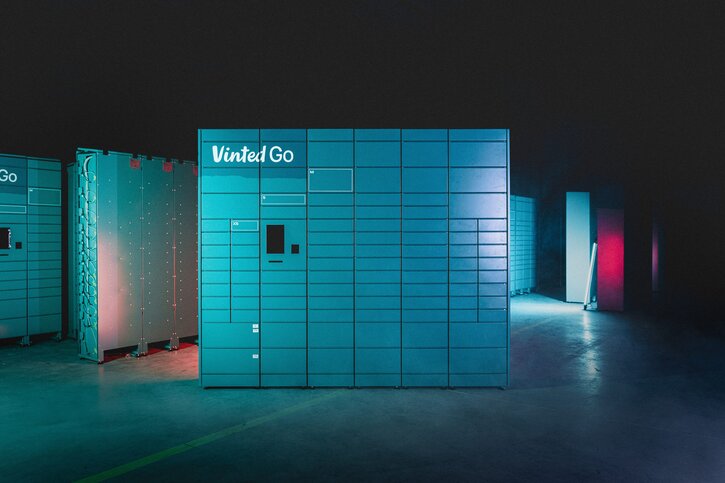Miha Jagodic, founder and CEO of Bloq.it, explains how the company is revolutionizing the parcel locker industry with agnostic software and hardware solutions
Tell us about Bloq.it and how you got started.
Bloq.it was started in 2019; the first idea was to build our own multifunctional locker network for storing items and sending and receiving parcels. Our first issue was that we couldn’t find a suitable provider for the software and the hardware, so we made the decision to build it on our own, from scratch.
While doing so, we started receiving a lot of business inquiries, so even before we could start rolling out our own locker network – we’d only deployed four lockers at the time – we were already moving and shifting to a B2B model as a technology provider. When Covid started and e-commerce grew exponentially, we found ourselves in a hyper-growth industry with one of the most advanced products on the market.
What makes you stand out from the competition?
Software has been the core differentiator of our product since the beginning, and our Bloq.it OS, which consists of different software products, is the most advanced software stack on the market. We have been fortunate enough to validate that with our recent landmark partnership with DHL eCommerce. DHL had a very tough challenge to solve at the time: it was growing its locker footprint very aggressively – including buying existing locker networks – and consequently got into a situation where it had a lot of different machines from different providers that were not properly integrated into a central system. To fix this, DHL launched a tender to find a software platform that could unify all the lockers under one software layer.
This is the type of challenge we were born to solve, and it is what we’re doing now with DHL eCommerce – we’re going country to country applying our software on existing locker networks and unifying them while creating a better flow that still caters to the individual needs of each country. We started in the Czech Republic late last year, and this year we are planning to do up to four countries, but I can’t disclose those yet.
What other business wins are you particularly proud of?
I mentioned DHL, which we are very proud of because it is a unique project and the first of its type in the market, but the other project we are very proud of is Vinted. It was our first enterprise project, and its trust in us was key for our path so we will always have a soft spot for it!
Being a secondhand fashion marketplace, the typical basket value is quite low, so it’s key for their business to offer affordable shipment options. Having gained a deep understanding of the delivery ecosystem in Europe, Vinted’s leadership decided to build a large locker network that allows users to send and receive the items they sell or buy on the platform.
In 2022 we won the pilot project and designed, built and deployed 200 lockers in Paris in record time. After a very successful pilot, we went into a fast expansion mode, which enabled us to produce more than 2,000 lockers during 2023.
This year we are continuing the rollout in France, where we expect to have close to 5,000 lockers operating by the end of 2024, and hopefully launch in more countries too.

How does the locker market need to adapt to meet customers’ needs?
The biggest thing missing in most markets is still the density of lockers. We see a positive trend in most European markets, where the main players in the market are actively planning and expanding their networks, so for us, it’s just a matter of time. For delivery companies, lockers are a no-brainer. They heavily optimize costs, solving multiple inefficiencies and common failure points in operations, all while improving the buying journey for customers.
The higher the density of lockers, the more efficient the operation for logistics operators and customers alike. This model has proved itself over and over again, so companies are now more willing to launch fast and with scale in mind. InPost is an example of that – it struggled initially and took time to get customers to adapt, but it kept on pushing and increasing density, and eventually there was a turning point. Since then, it’s become the undisputed market leader in its home market and is now expanding aggressively abroad. As a consequence, Poland now has more locker deliveries than home deliveries in total, and we’re confident more countries will follow this.
What are the next steps in your development plans?
We have been gathering the key elements to disrupt the industry: the most challenging projects, catering to the needs and challenges of the companies with the most know-how and experience in this segment, and expanding our team with world-class engineering and operational know-how. We remain extremely ambitious, and we’re confident that this segment is still in its very early days.
So naturally, we have a very exciting roadmap for both hardware and software. While software has been our key value proposition, we also offer a full end-to-end solution that includes the three main components for a smart locker network to operate: software, hardware and locker operational services (deployment and maintenance). We want to be the one-stop shop.
Speaking of software, there are three main areas of work. One is to be agnostic, at both the hardware and the integration level. Bloq.it OS will be increasingly modular and make it easier to plug and upgrade pre-existing networks.
The second is open network software protocols. It’s an increasingly important segment, with a commercial and regulatory push, and a very technically challenging one. In our view, there are still no good benchmarks in the industry, and we’re working on launching important protocols that would solve some of the main pressing challenges, such as multitenancy capacity management between tenants and billing mechanisms.
The third is related to strong operational tools. Launching, managing and maintaining thousands of lockers across different regions is a challenging task from an operational perspective, and without the right set of tools, it becomes daunting and nearly impossible. We still see a lot of large networks being launched and managed via Excel sheets and basic tooling. Leveraging our experience doing these operations and incorporating feedback from operators and our own operational teams, we’re developing complete operational management tools that encompass asset management, deployment processes, technical support, spare part management and maintenance tasks at scale. These three areas of work will play a key role in further differentiating our software ecosystem from any other stack in the market. We’re also preparing a big release in terms of hardware, but we’ll be sharing more about that at a later date.
In terms of expansion plans, we are really focusing on the large-scale projects across Europe, and perhaps we will be able to announce some of them during the next few months.


